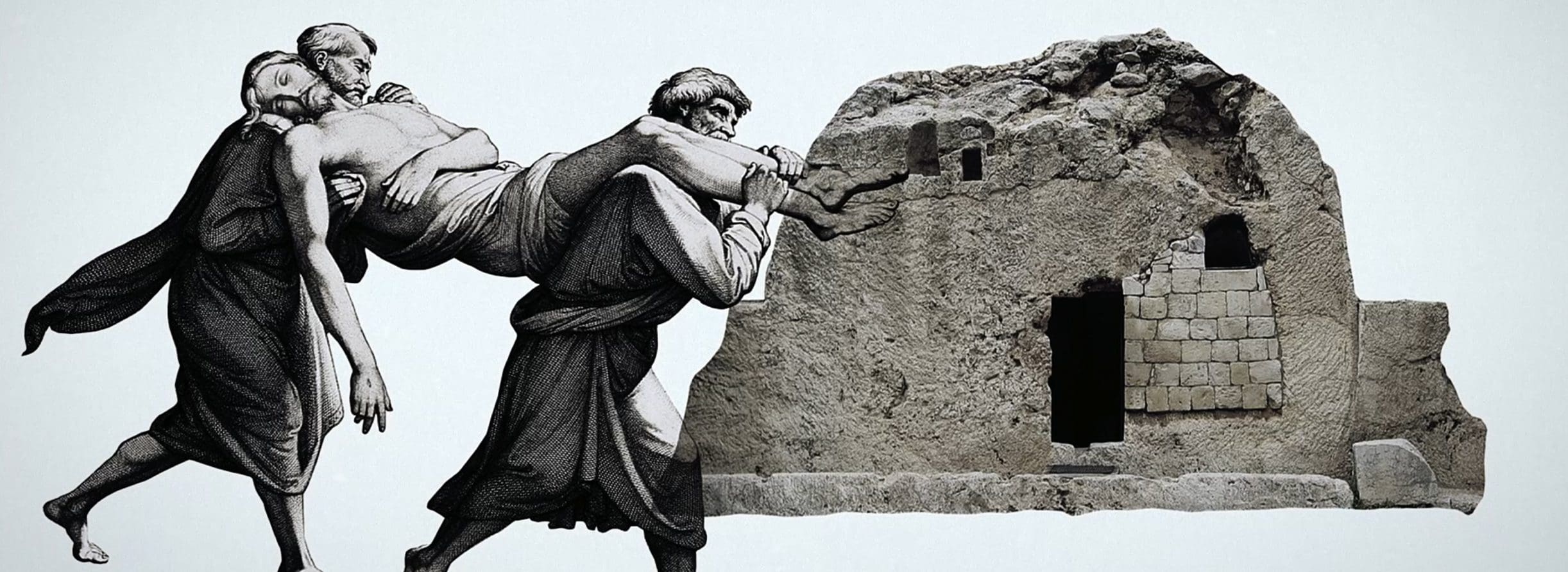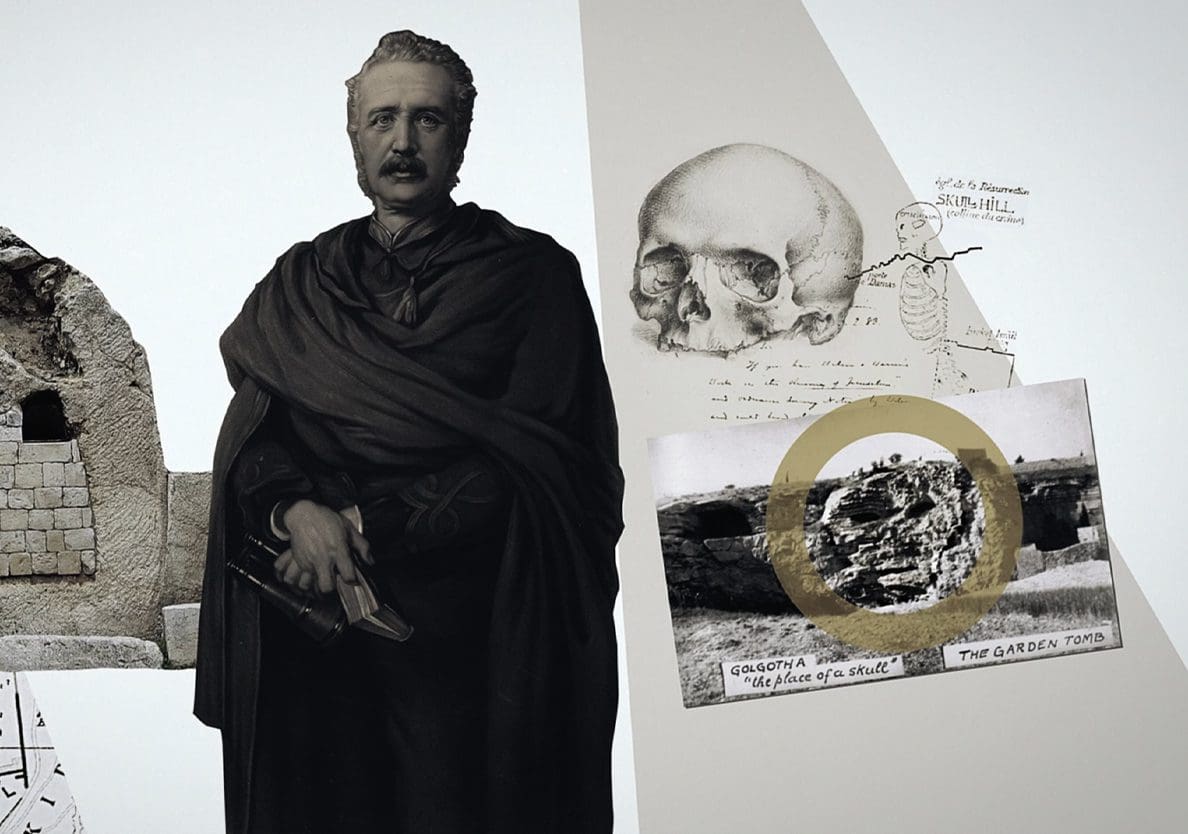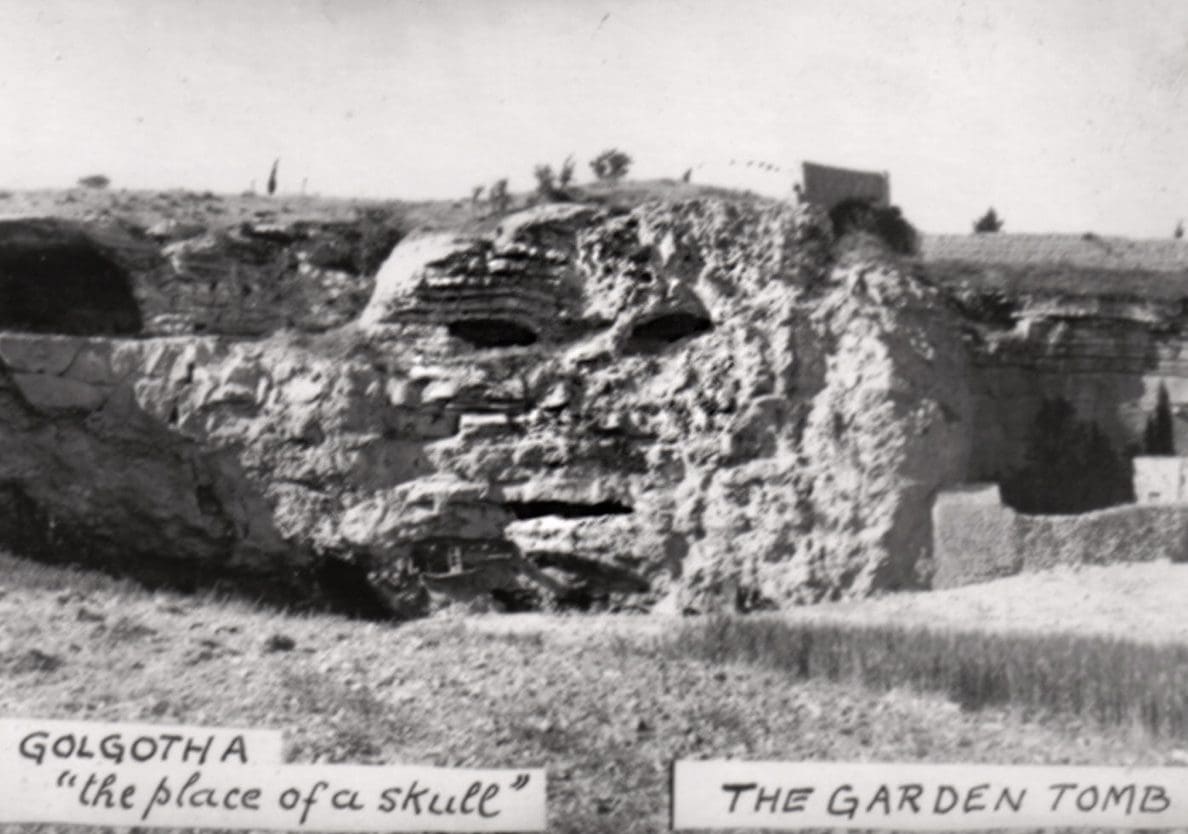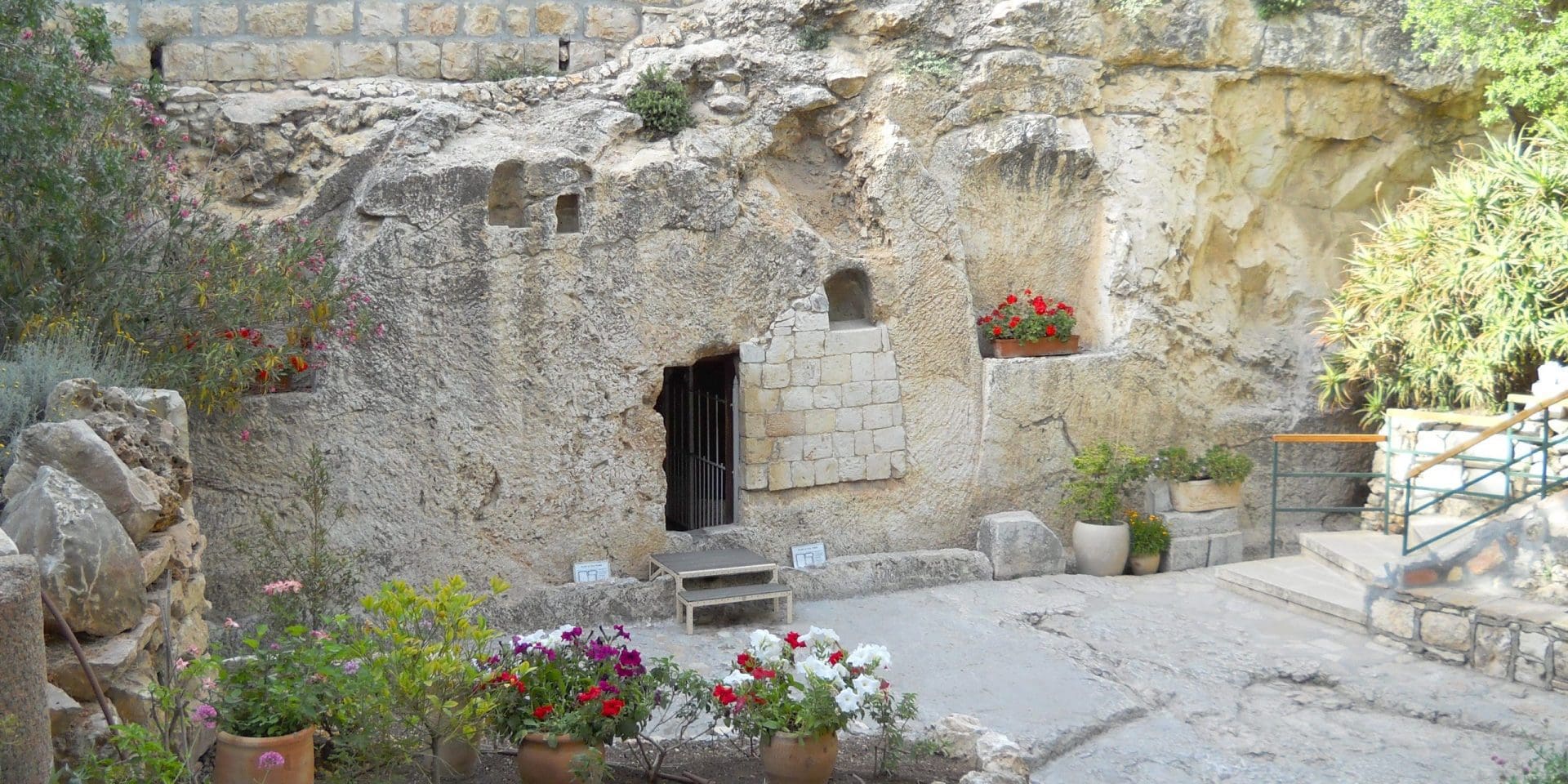The Garden Tomb claims to be the real crucifixion and burial spot of Jesus. It’s located just North of the Damascus Gate of Jerusalem in the Western escarpment of a limestone hill. It is a rock-cut burial cave that was first discovered by a farmer digging a cistern in 1867, reports from 1874 describe the cave tomb as half full of dirt and human bones. The cave was then cleared out by the owner for use.
In 1883 the famous British general Charles George Gordon visited Jerusalem and identified the hill into which the cave is dug as the site of Golgotha, or Calvary – the place of Jesus’ crucifixion. Gordon’s reasoning for this identification was a spin on Golgotha’s meaning: skull. For reasons that remain unclear, he superimposed a skeleton onto the map of Jerusalem and placed the skull at the hill’s location. Further evidence was derived from cave-like indentations on the hill that make it reminiscent of a human skull.

Gordon may have been dissatisfied with the rival Church of the Holy Sepulchre because the church, while claiming to contain Golgotha and Jesus’ tomb, is inside the Old City Walls in a busy area. This seems to contradict the Gospels in which Jesus was crucified outside of the city and buried nearby in a new, rock-cut tomb that was in a garden. Religious tensions may also have played a part as the church excluded protestant worship.
Gordon’s report on the newly claimed Golgotha was published posthumously (1885) and may have been accepted with such popular fervor because of his fame and heroic war-time death. Though Gordon wasn’t the first to make these claims (German scholar Otto Thenius suggested it in 1842), he certainly was the most famous and the site today still venerates his name. The Garden Tomb area was purchased in the 1890s by a group of Englishmen to preserve it, the area was cleared, and a high garden wall built. Over the years a few excavations have been carried out in front of the tomb (1904, 1955) but unfortunately, they were poorly recorded, went unpublished and discovered artifacts were never properly studied.
In 1974 archaeologist Gabriel Barkay visited the site several times and has published evidence that claims to disqualify the Garden Tomb as the tomb of Christ. According to Barkay the Garden Tomb is a part of a large Iron Age II cemetery, the time of the Biblical kings of Judah (8th-7th centuries BC), and that it was retooled and reused in the Byzantine period (5th-7th centuries AD). Indeed, numerous burial caves dated to this time period are found as close as 6 feet from the Garden Tomb. These tombs have been dated based on their pottery and artifacts, and the Garden Tomb appears to match their construction in nearly every way, while clashing with known first century tomb construction.


If the tomb was Jesus’ and therefore was dug out in the first century, we would expect it to be built like other tombs of its time, the rooms would be oriented one behind another, it should have burial niches (kokhim), or benches dug into the wall with arches above them (arcosolia), a sunken burial chamber floor, and characteristic tooth-comb chisel marks. The Garden Tomb has none of these. Its rooms are beside each other, its burial chamber originally had 3 plain burial ledges or benches, and the rock shows no comb chisel marks. At a later time, its benches were dug out to create sarcophagi characteristic of the Byzantine era and there are also red painted Byzantine crosses on the walls.
During his visits Barkay also discovered artefacts sitting in a closet that are similar to artefacts unearthed in the Iron Age tombs nearby (clay 4-legged animal, clay model of bed or couch).
In the Byzantine period, the 5th century specifically, the Empress Eudocia built the Church of St. Stephen that’s nearby the Garden Tomb, which perhaps explains its Christian reuse at this time. During the Middle Ages, the tomb area was used as a crusader stable, which is when the site’s water cistern is believed to have been dug. At this time the whole area in front of the tomb was carved down several inches to facilitate this, meaning that visitors today must step up to enter the tomb.

Corie Bobechko is a daily co-host, speaker, and writer of Bible Discovery. She also hosts a YouTube channel that shows how history and archaeology prove the Bible. Her heart for seekers and skeptics has led her to seek truth and share it with others. Corie also has a Bachelor of Theology from Canada Christian College.
• Bryan Windle, “Tomb of Jesus Uncovered for First Time in Centuries”. Associated for Biblical Research. Published on November 04, 2016.
• Barkay, Gabriel. “The Garden Tomb: Was Jesus Buried Here?” Biblical Archaeology Review 12.2 (1986): 40–53, 56–57.
https://www.baslibrary.org/biblical-archaeology-review/12/2/2
• Murphy-O’Connor, Jerome. “The Garden Tomb and the Misfortunes of an Inscription,” Biblical Archaeology Review 12.2 (1986): 54–55.
https://www.baslibrary.org/biblical-archaeology-review/12/2/3
• Bahat, Dan. “Does the Holy Sepulchre Church Mark the Burial of Jesus?” Biblical Archaeology Review 12.3 (1986): 26–45.
https://www.baslibrary.org/biblical-archaeology-review/12/3/1
• Ross, J.-P. B. “The Evolution of a Church—Jerusalem’s Holy Sepulchre,” Biblical Archaeology Review 2.3 (1976): 3–8, 11.
https://www.baslibrary.org/biblical-archaeology-review/2/3/4






